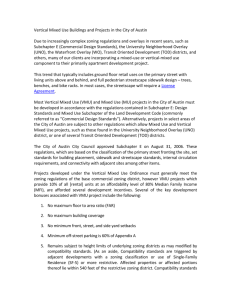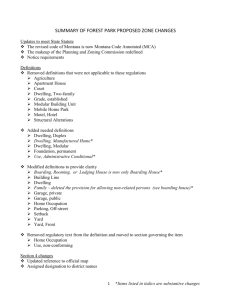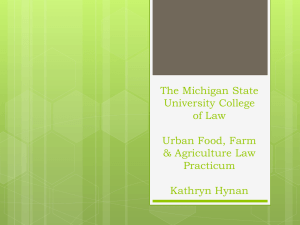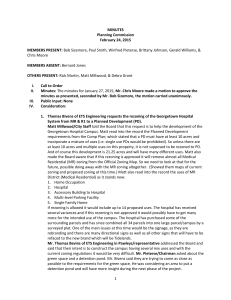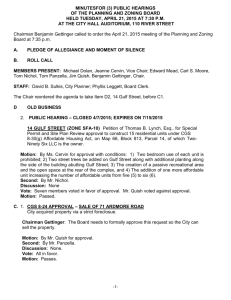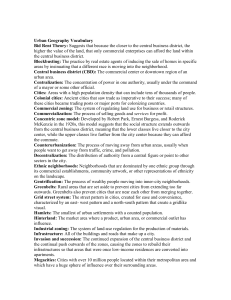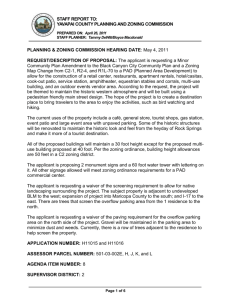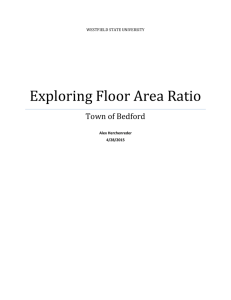Zoning and non-Zoning Tools Zoning Tools Revised Zoning District
advertisement
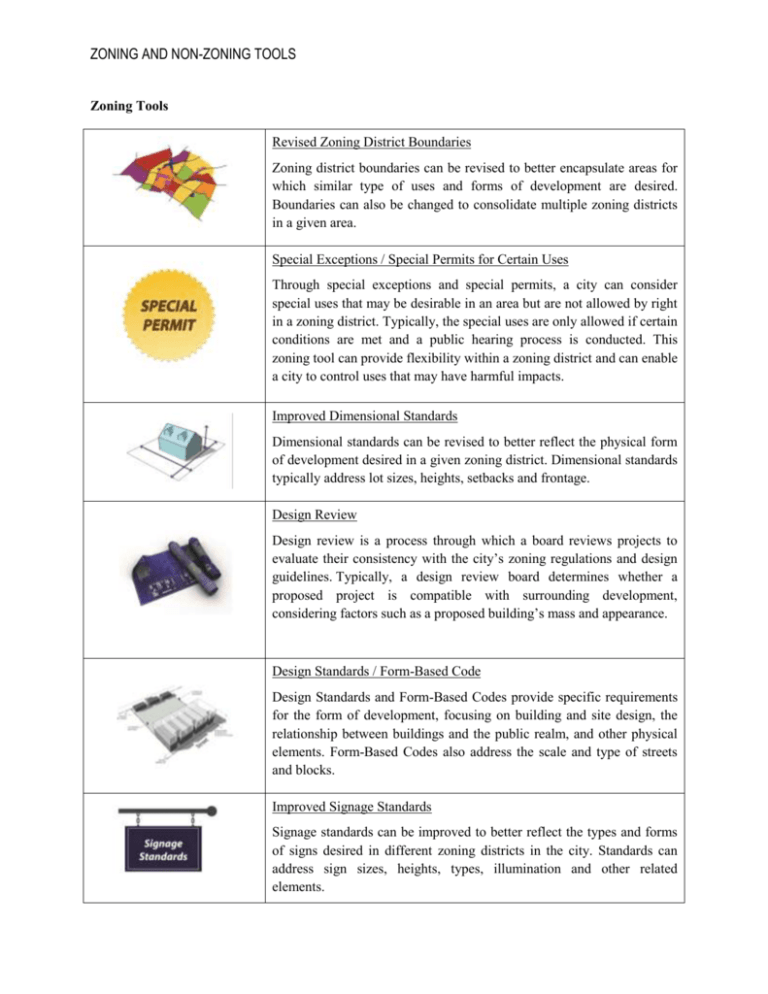
ZONING AND NON-ZONING TOOLS Zoning Tools Revised Zoning District Boundaries Zoning district boundaries can be revised to better encapsulate areas for which similar type of uses and forms of development are desired. Boundaries can also be changed to consolidate multiple zoning districts in a given area. Special Exceptions / Special Permits for Certain Uses Through special exceptions and special permits, a city can consider special uses that may be desirable in an area but are not allowed by right in a zoning district. Typically, the special uses are only allowed if certain conditions are met and a public hearing process is conducted. This zoning tool can provide flexibility within a zoning district and can enable a city to control uses that may have harmful impacts. Improved Dimensional Standards Dimensional standards can be revised to better reflect the physical form of development desired in a given zoning district. Dimensional standards typically address lot sizes, heights, setbacks and frontage. Design Review Design review is a process through which a board reviews projects to evaluate their consistency with the city’s zoning regulations and design guidelines. Typically, a design review board determines whether a proposed project is compatible with surrounding development, considering factors such as a proposed building’s mass and appearance. Design Standards / Form-Based Code Design Standards and Form-Based Codes provide specific requirements for the form of development, focusing on building and site design, the relationship between buildings and the public realm, and other physical elements. Form-Based Codes also address the scale and type of streets and blocks. Improved Signage Standards Signage standards can be improved to better reflect the types and forms of signs desired in different zoning districts in the city. Standards can address sign sizes, heights, types, illumination and other related elements. Improved Parking Requirements Parking requirements can be revised to ensure that the type, supply, location and design of parking align with the desired character of different neighborhoods (e.g., pedestrian-friendly). Greater flexibility in requirements can also be provided through the allowance of shared parking, offset allowances to public parking, and other means. New Overlay Districts Overlay districts are supplemental zoning districts that are placed over underlying zoning districts and identify special provisions for the given area. These overlay districts can be created to add requirements to an area (e.g., extra environmental protections) or to provide greater flexibility in an area (e.g., allowance of more uses or increased density). Non-zoning Tools Code Enforcement / Compliance Alternatives Code enforcement is used to ensure structures meet building, fire and other codes adopted by a city to protect the public health, safety and welfare. Alternatives to compliance to codes can be determined for existing buildings where strict compliance is difficult or impossible. Streetscape and Street Improvements A city can make improvements to streets and streetscapes to help create safe, vibrant and walkable environments. Wide roads, for example, can be narrowed, providing space for sidewalks and bicycle lanes. Streetscape improvements can also address street lighting, signage, landscaping, street furniture, and pedestrian and bicycle infrastructure. Public Parking Initiatives A city can undertake initiatives to better manage parking and improve parking access. Parking initiatives can address permits, meters, signage, public lots or garages, and on-street spaces. Facade / Signage Improvement Programs Façade and signage improvement programs provide financial assistance to property and business owners to help enhance their building facades or signs. These programs can be established as straight grants, matching grants or loans. Similar programs can help property owners make handicap-accessible improvements and building code upgrades.
